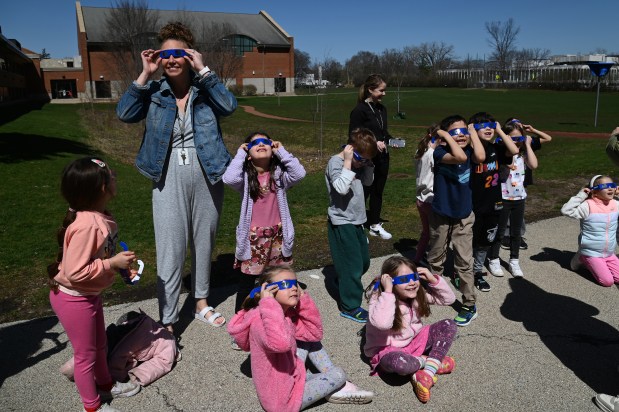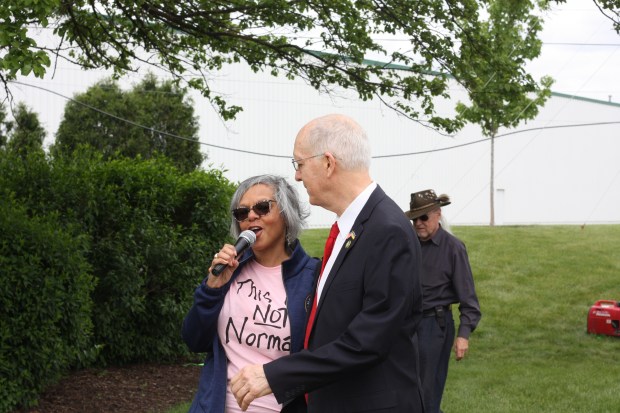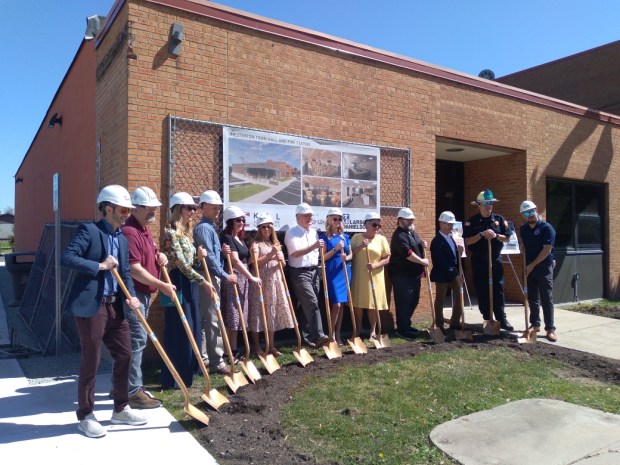The sun’s so dark, you gotta wear shades.
The breezy forecast was looking up on April 8 so Northbrook students of Greenbriar School could look up at a solar eclipse on Monday afternoon using special sunglasses.
Skies were sunny and nearly 70 degrees for grade schoolers to use safety eyewear to view the much-anticipated partial solar eclipse at 2:07 p.m. Glenbrook community time.
First-graders at the school (2195 Cherry Lane) were among learners at Northbrook District 28 and schools around the United States experiencing the solar eclipse as a childhood memory maker.
Students went outside at 1:55 p.m. to view the 2:07 p.m. time when 92.7 % coverage was expected by District science educators who consulted NASA’s eclipse table.
“They’re so excited,” Corrie Tucker, Greenbriar School first-grade teacher, said about the students. “It’s very hard to even contain their excitement.
“I hope that they just remember just the experience, that they got to experience it together as a class and as a whole community, as a school, and that they just get to kind of share that experience,” Tucker said.
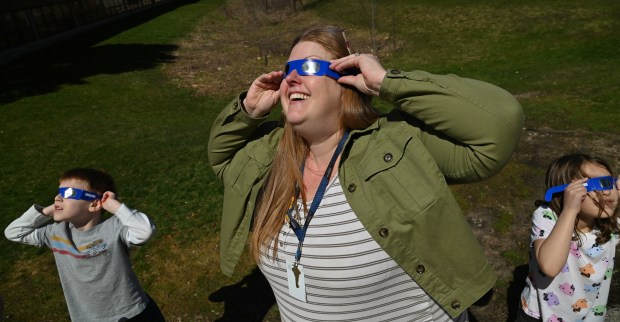
Superintendent of Schools Jason Pearson said a solar eclipse, “is a rare opportunity to engage our students and inspire them to ask questions and pursue authentic learning in the area of science and astronomy, perhaps even leading to a career or field of study.
“In District 28, we wanted to ensure that all students and staff had the opportunity to experience the eclipse safely,” Pearson said. “We are grateful to the PTOs who helped fund the purchase of eclipse glasses from a certified scientific supplier and to our science teachers who developed a short curriculum to give the students context for the phenomenon.”
Ginny Hiltz of Northbrook, Greenbriar School principal, said the eclipse is the fifth solar eclipse visible in the United States since the school opened its doors in 1949.
“We were excited for this unique learning opportunity for our students,” Hiltz said. “This is the first one that they’ll ever have experienced in their life.
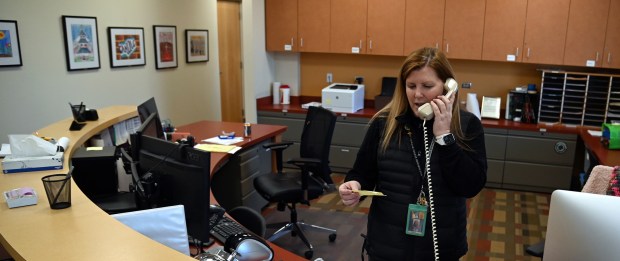
“It’s kind of neat to be able to take advantage of it,” Hiltz said.
According to https://science.nasa.gov/eclipses, the April 8, 2024 total solar eclipse crossed North America, passing over Mexico, the United States, and Canada.
Greenbriar School created a lesson plan with a slide that had a fun fact with wording appealing to children.
“Whoa!” the slide said, using colorful galactic artwork.
“Did you know that we will not see another solar eclipse until 2044?”
This means if you’re a first-grader, then six-year-old children of today will be 26 the next time they don solar eclipse cool shades.
Another slide explained, “What is a solar eclipse?
“A solar eclipse happens when the moon passes between the sun and the Earth, blocking some or all of the sun’s light from reaching the Earth.”
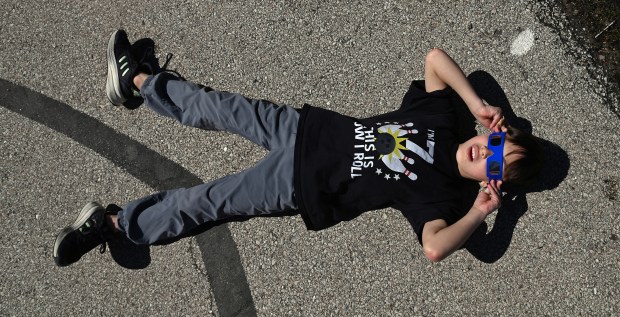
The solar eclipse viewing aligns with the school’s curriculum principles of STEM, Hiltz said. The components are science, technology, engineering, and mathematics.
In March, Lance Brinkman, Greenbriar School’s instructional facilitator, began collaborating on the planning of the solar eclipse learning unit.
“One of the exciting things about the eclipse is that it’s one of those really memorable moments,” Brinkman said. “I remember when I was in fifth grade looking up at an eclipse in elementary school.”
Brinkman was in Michigan during that solar eclipse.
“It was exciting for me as a young child so I’m excited for kids to have a real experience with the Earth, the moon and the sun in their lifetime here in elementary school to begin to connect it to what they’re learning in class,” Brinkman said.
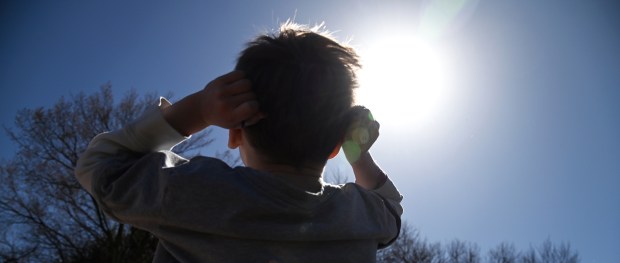
As kids viewed the eclipse, comments overheard included how cool it was with lots of expressions of glee and jumping delight.
Outside, minutes before the peak eclipse time, Corrie Tucker expressed gratitude for the provided solar eclipse glasses.
“It’s so exciting,” Tucker said. “It’s just so nice.”
Karie Angell Luc is a freelancer for Pioneer Press.


